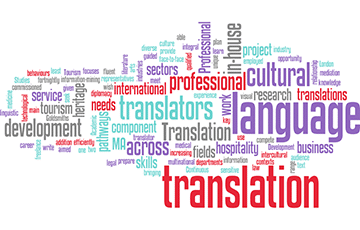India is a country in South Asia. It is the seventh-largest country by area, the second-most populous country, and the most populous democracy in the world.
India, one of the world’s most ancient and living civilizations is the 7th largest country in the world. With 2.4 percent of the total surface area of the world, many of the Indian states themselves are larger than a number of countries in the world.
The geography of India is a showcase of diversity as its landscape varies from snow-capped peaks to deserts, plains, rainforests, hills, and plateaus. From the highest mountains in the world to a vast coastline of over 7000km, from the barren and hot Thar desert to the second coldest inhabited place on earth. India has a number of interesting geographical facts in its book.
Key Cities
Key cities in India include Mumbai, New Delhi, Kolkata, Chennai, Bangalore, Hyderabad, Ahmedabad, Pune, Surat, and Jaipur.
Historical, Cultural facts & Religion
India’s history and culture are dynamic, spanning back to the beginning of human civilization. It begins with a mysterious culture along the Indus River and in farming communities in the southern lands of India. By the end of the fourth millennium BC, India had emerged as a region of highly developed civilization.
India is the birthplace of Hinduism, Buddhism, Jainism, Sikhism, and other religions. They are collectively known as Indian religions. India is one of the most religiously and ethnically diverse nations in the world, with some of the most deeply religious societies and cultures.
Brief Country History
The first Indian civilization arose in the Indus valley about 2,600 BC. It actually straddled northwest India and Pakistan. By 6,500 BC the people of the area had begun farming. By 5,500 BC they had invented pottery. By about 2,600 BC a prosperous farming society had grown up. The farmers used bronze tools. They grew wheat, barley, and peas. They also raised cattle, goats, and sheep. Water buffalo were used to pull carts. The people spun cotton and they traded with other cultures such as modern-day Iraq. Some of the people of the Indus Valley began to live in towns. The two largest were at Mohenjo-Daro and Harappa.
Mohenjo-Daro probably had a population of 35-50,000. By the standards of the ancient world, it was very large. It consisted of two parts. One part was a citadel. It contained a public bath and assembly halls. It also held a granary where grain was stored. The lower part of the town had streets laid out in a grid pattern. The houses were 2 or even 3 stories and were made of brick as the stone was uncommon in the area. Bricks were of a standard size and the Indus Valley civilization had standard weights and measures. The streets had networks of drains.
Life in Mohenjo-Daro was obviously highly civilized and ordered although most of the people of the Indus Valley civilization were farmers outside the towns. The Indus Valley civilization had a form of writing but unfortunately, it has not been deciphered so nothing is known of their political system or their religion. However, many engraved seals and terracotta figurines have been found. The Indus Valley civilization was at its peak in the years 2,300-1,700 BC. Then after 1,700 BC, it broke down.
The reasons for this are not clear. Perhaps there was a climatic changed and the area grew cooler and drier. It has also been suggested that rivers changed course. In those days less rainfall or a change in the course of a river would have had severe consequences for farming and of course, like all early civilizations the Indus Valley depended on farming. Civilization was only possible if the farmers made a surplus. They could exchange their surplus with craftsmen for manufactured goods. They could also exchange some goods from far away. However, if the farmers no longer made a surplus, they could no longer support the craftsmen who lived in the towns. The populations of the towns would drift away to the countryside. Trade and commerce would decline. As society grew less prosperous people would return to a simpler way of life and the invention of writing would disappear. The Indus Valley civilization vanished and it was forgotten. It was not re-discovered until the 1920s.
In the 1990s the Indian economy was deregulated further and as a result, it boomed. In the early 21st century the economy of India grew rapidly. In the future, India will become a prosperous country. Today the population of India is 1.281 billion.
Language (s) Written & Spoken
India is home to several hundred languages. Hindi is the most widely spoken language in the northern parts of India. The Indian census takes the widest 12% of Indians declared that they can speak English as a second language.
Hindi is written in the Devanagari script and uses more Sanskrit words, whereas Urdu is written in the Perso-Arabic script and uses more Arabic and Persian words. Hindi is the most commonly used official language in India.
Important Types of Commerce in India
Traditionally, India had six major industries. These were Iron and Steel, Textiles, Jute, Sugar, Cement, and Paper. Further, four new industries joined this list namely, Petrochemical, Automobile, Information Technology (IT), and Banking & Insurance. These industries are important for India’s economy. Therefore, understanding the growth of these industries can offer a good insight into the relationship between their growth and government policies.
Iron and Steel industry is one of the most important industries considering total investments. These are typically public sector plants. Further, the industry offers direct employment to around 250 thousand workers. According to the World Steel Association, India is one of the world’s top 10 producers of steel. However, despite the importance of this industry, we import large quantities of steel every year.
Major industries in India include:
- Textile Industry (Cotton and Synthetic)
- Jute Industry
- Sugar Industry
- Cement Industry
- Paper Industry
- Petrochemical Industry
- Automobile Industry
- Information Technology (IT) Industry
Language Services US and others will provide working with India
The language barrier in global marketing is still very real. English may be the Esperanto of the business world, but that doesn’t mean that all consumers speak it. You’ll need a team of language experts advising you to translate and localize a campaign that resonates with your customers, with a message that captures the hearts and minds of your target. The important step is adapting the product/services to make it discoverable and understandable. This involves making content, the product and the website (as well as any marketing materials) in the preferred language of that market e.g., Hindi, Bengali, Punjabi, Marathi, Telugu, Tamil, Kannada and so on in India depending upon the state.
Looking for a Hindi, Bengali, Punjabi, Marathi, Telugu, Tamil, Kannada translation company? Look no further. American Language Services (AML-Global) offers certified translations, native interpreting services, and turn-key localization solutions for any language. Call us today @ 1-800-951-5020 for further information, visit our website https://www.alsglobal.net/ or for a quick quote click http://alsglobal.net/quick-quote.php.
























